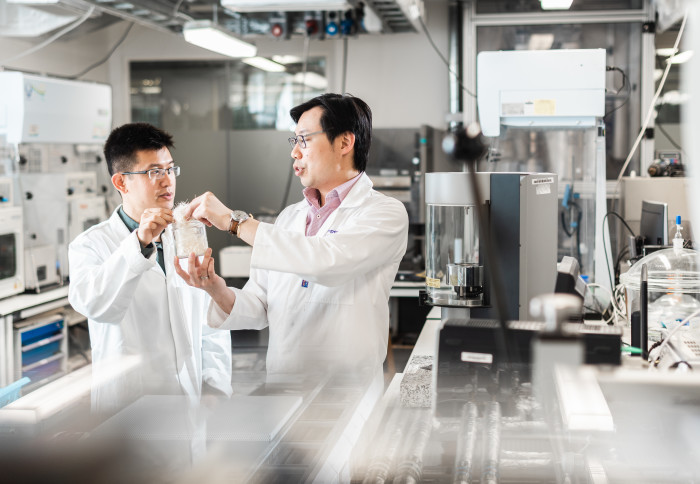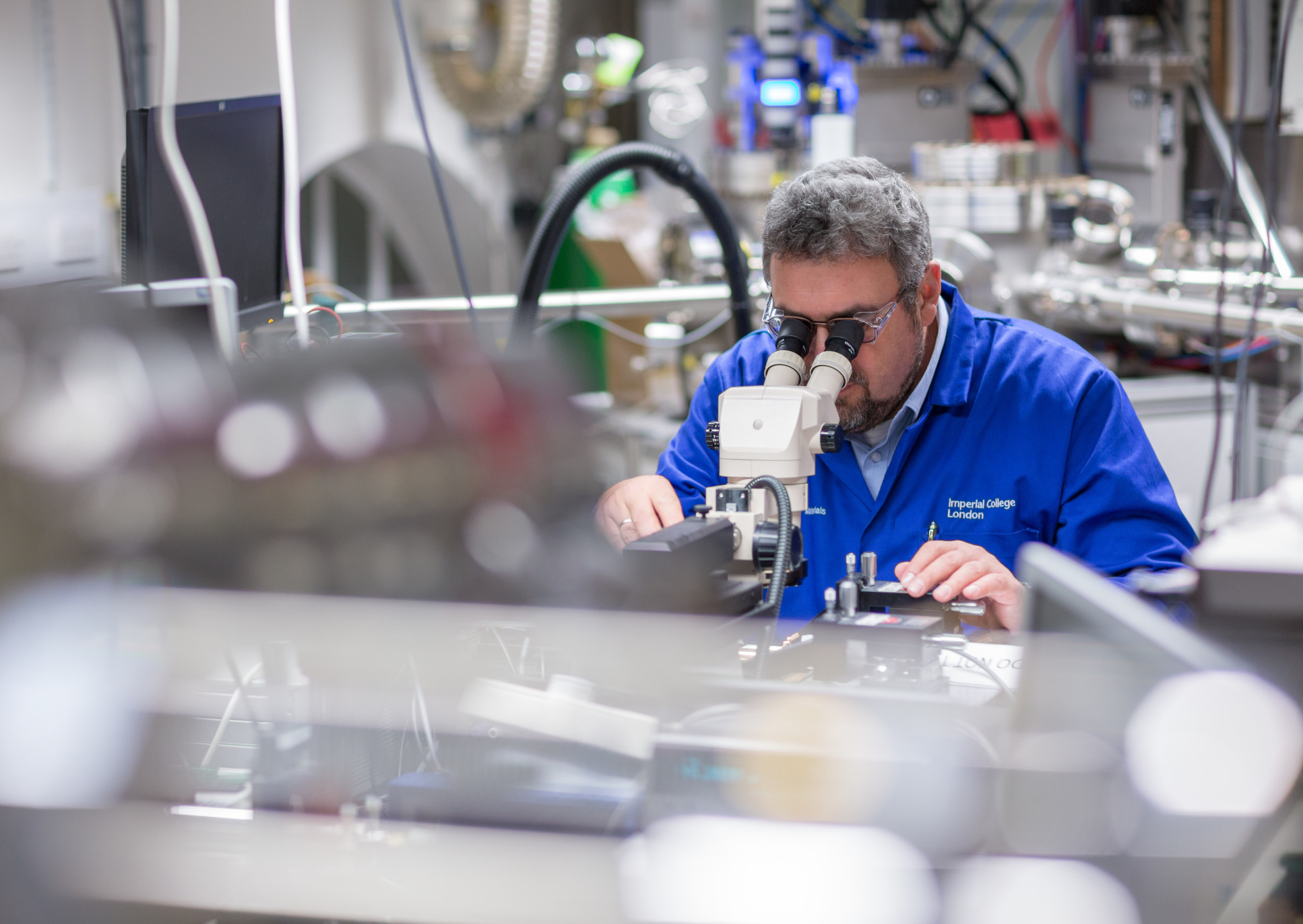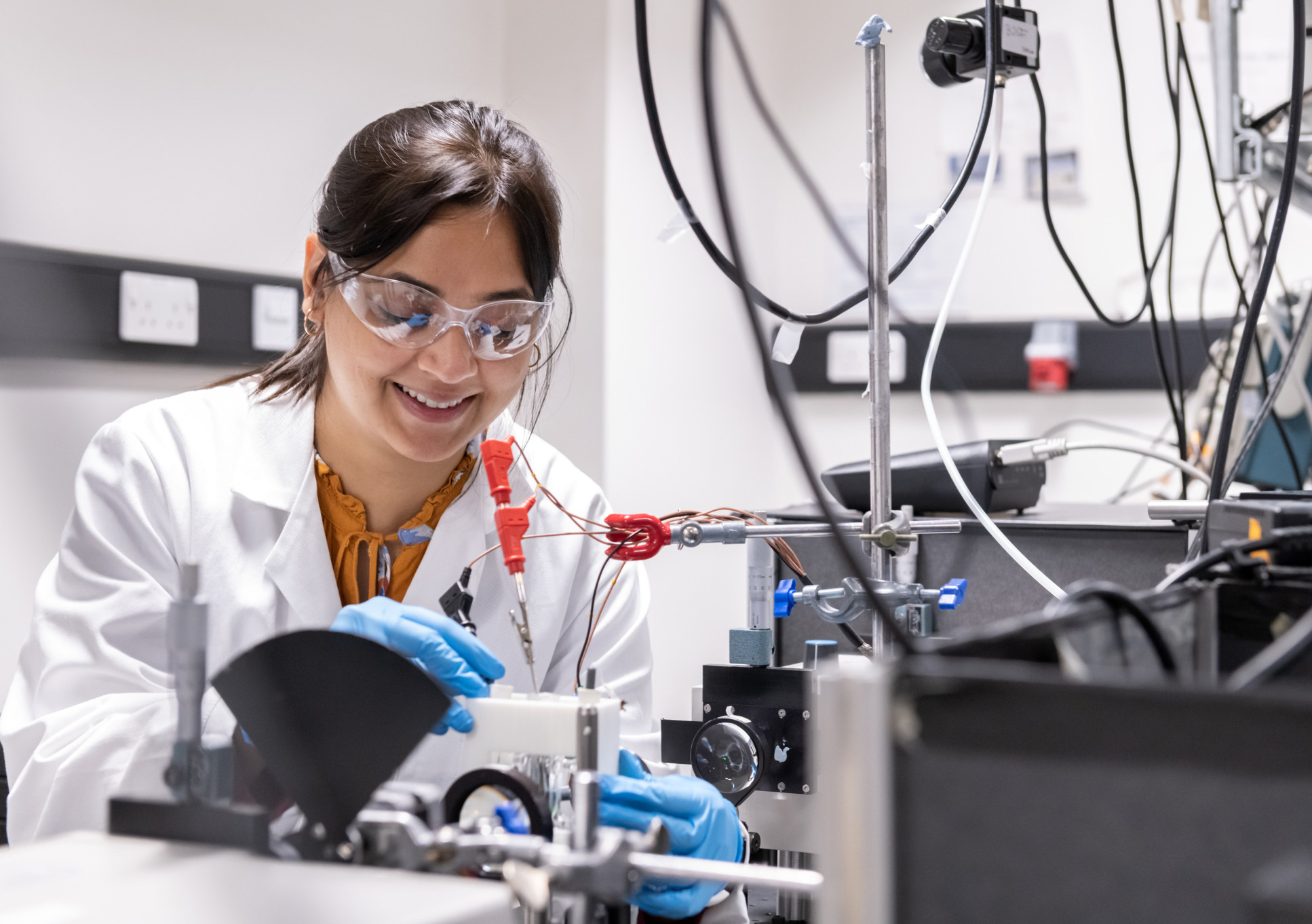Imperial academics scoop over £1M Royce grant for pioneering energy research

Imperial academics have been awarded new grants for energy research projects funded by the Henry Royce Institute.
The funding, from four separate calls, including the Materials Challenge Accelerator Programme & Industrial Collaboration Programme, will support researchers investigating materials for the large-scale use of hydrogen in energy, sustainable packaging and improving the lifetime of fuel cells.
Professor Neil Alford MBE FREng, Royce Research Area Lead and Professor of Physical Electronics and Thin Film Materials, commented:
"I am delighted that Royce has supported these excellent proposals, all of which support the drive to Net Zero and sustainability. Importantly they all align with a key strategy for the College in supporting the Transition to Zero Pollution."
Dr Sam Cooper
Hydrogen electrolysers, fuel cells, batteries, and solar panels typically contain functional composite materials. The microstructure of these composites can significantly influence the performance of the devices.
In this project, Dr Cooper will combine machine learning-based data fusion methods with new imaging techniques to investigate the impact of manufacturing parameters on the resulting microstructure of various energy materials.
By bringing together several state-of-the-art imaging and data processing techniques, Dr Cooper hopes to set a new bar for characterising the microstructure of composite energy materials.
Professor Finn Giuliani
Caloric cooling exploits materials engineered to change the temperature in response to an applied external field. This applied external field could include materials that respond to magnets, electricity or stress. These materials can be functionalised into devices, which can be integrated into solid-state cooling systems that are energy-efficiency and free from refrigerant gases.
Within the field of caloric cooling, the magnetic approach has two unique advantages: the driving area is derived from a compact permanent magnet (requiring no input power) and almost as a consequence, unused work within each cooling cycle can be readily recovered with nearly perfect efficiency. These two advantages mean magnetic cooling can be very energy efficient. However, to practically realise these advantages, the materials must be produced in very thin defect-free slices. Professor Giuliani will investigate how these materials can be produced as quickly and efficiently as possible.
Dr Peter Petrov
Led by Cranfield University, the SAUNA project investigates the Water vapour corrosion of metallic and ceramic components in hydrogen-fuelled engines. It is estimated that hydrogen combustion in an aerospace gas turbine would produce about 2.6 times more water vapour than kerosene fuel.
This increased water vapour can lead to unexpected corrosion mechanisms compared to conventional fuels. Consequently, different, more corrosion-resistant materials might have to be used in future engine designs.
Imperial College London will partner with Cranfield University to characterise the chemistry and microstructure of corrosion products developed after the water vapour corrosion experiments.

Professor Koon-Yang Lee
The recycling of flexible plastic packaging is still a challenge. Existing materials and plastics recovery facilities still need to be equipped to handle flexible plastics. In addition, many flexible plastics manufactured today consist of multiple distinct plastic layers, which makes recycling difficult. Consequently, flexible plastic packaging waste will always end up in landfill or leak into the environment.
A viable solution to this challenge is to substitute fossil-derived flexible packaging with fully renewable materials to reduce the overall carbon footprint and waste management concerns. Professor Koon-Yang Lee and his team will work with Dr Jonathan Blaker at the University of Manchester to develop sustainable, flexible plastic packaging.
Professor Eduardo Saiz Gutierrez
Sintering, the processing of ceramics and refractory metals, is an energy-intensive process with an associated carbon footprint. Despite the advances in the field, fundamental knowledge of the mechanisms that control densification and microstructural evolution is limited.
Professor Eduardo Said Gutierrez will develop a unique furnace dedicated to the in situ analysis of field-assisted sintering. This furnace will have high temperature (up to .2000oC) capabilities under a controlled atmosphere. Different ports and windows will enable the attachment of additional equipment for high-speed imaging, thermal imaging, mass spectrometry, and electrical leads as required for in situ studies.
To open new opportunities in the analysis of field-assisted sintering, the group will measure displacement and temperature profiles in a sample while recording electric currents and analysing the evolution of gaseous species in situ. The findings will enable the sintering of a broader range of compounds, including atmosphere-sensitive materials for energy applications like batteries or solid-state cooling, fuel cells, shielding for fusion and fission or high-temperature catalysis.
Dr Emilio Martinez-Paneda
Dr Emilio Martinez-Paneda and his team will exploit Royce’s newly developed gaseous hydrogen charging facilities to shed light on one of the biggest challenges to enabling the large-scale use of hydrogen in energy applications: quantifying the ingress of hydrogen into metallic alloys and its deleterious effects on the structural integrity.
These hydrogen-metal interactions are typically addressed using electrochemical methods due to the simplicity and convenience of introducing hydrogen in metals from aqueous solutions. However, to meet the increasing demands for hydrogen as a clean energy vector, we must face the challenge of transporting large volumes of hydrogen gas at high pressures.
The team aim to implement a robust test protocol to quantify and compare hydrogen ingress into metallic alloys from various aqueous and gaseous environments.
Dr Reshma Rao
Dr Reshma Rao and her team will develop stable catalyst supports to reduce the iridium loading in proton exchange membrane (PEM) water electrolysers.
PEM electrolysers have been identified as the green hydrogen production technology most amenable to coupling with renewable electricity. However, they rely on high loadings of iridium-based catalysts at the anode to catalyse the sluggish water oxidation reaction. Iridium is a highly scarce material, and the reliance of PEM electrolysers on iridium limits its scale up to the terawatt level.
In collaboration with industrial partner Teer Coatings, the team will design stable, conductive, low-cost supports on which highly active nanoparticles of iridium oxide can be dispersed. The team will use the cutting-edge deposition facilities at the Royce Institute to determine the lowest loading yields the most active and stable catalyst structure.

Professor Stephen Skinner
With an increasing international drive towards addressing a net zero future requiring the development of flexible alternative energy conversion and storage solutions, there is an expanding opportunity for ceramic electrochemical cells at scale.
These solid oxide cells (SOC) can be operated as fuel cells to generate electricity or, more recently, as electrolysers to produce green hydrogen. Both operating conditions will play a vital role in improving air quality, reducing dependence on fossil fuels, and ultimately mitigating climate change. To facilitate the rapid development and exploitation of solid oxide technologies, detailed knowledge of the evolution of electrochemical processes at surfaces and their relationship to materials ageing must be developed.
Professor Skinner will investigate the impact of the oxygen partial pressure at the air electrode on degradation processes under steam electrolysis mode and use these findings to inform the lifetime modelling of ceramic electrochemical cells.
Article text (excluding photos or graphics) © Imperial College London.
Photos and graphics subject to third party copyright used with permission or © Imperial College London.
Reporter
Michael Leverentz
Department of Materials
Kayleigh Brewer
Department of Materials